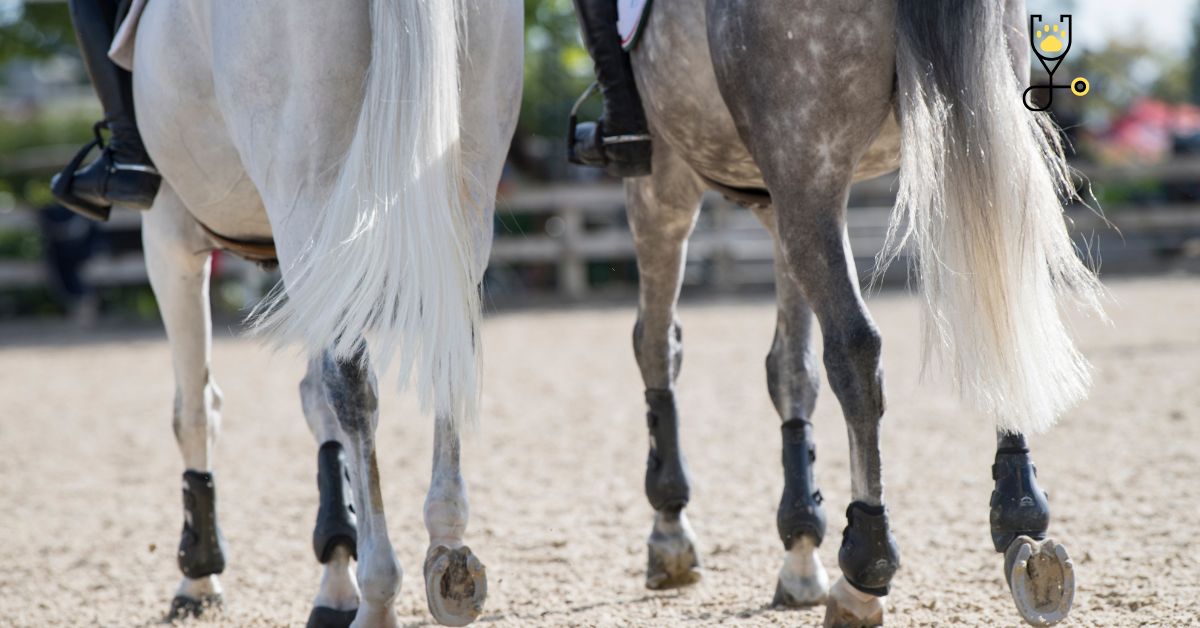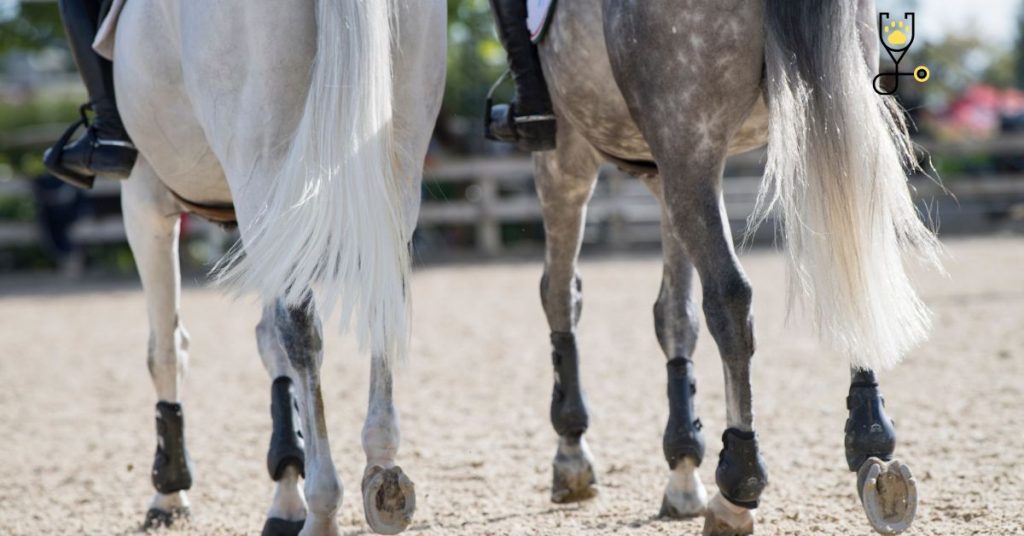With all the different problems horses can experience, it’s important to be able to recognize the five most common hind leg problems. From lameness and lacerations to bowed tendons and suspensory ligament injuries, these conditions can have a major impact on your horse’s health. By knowing the causes and symptoms of each problem, you can get your horse the treatment they need as quickly as possible. So, what are these five common hind leg problems? Keep reading to find out!
8- Major Hind Leg Problems in Horses
So, what are the five most common hind leg problems in horses? Let’s take a look:
1. Lameness
Lameness is a general term used to describe any problem that causes a horse to change its normal gait. Vets will often use the term to describe a wide range of problems, from a small stone bruise to a serious injury such as a fractured bone. This is because, while some lameness problems can be easy to fix, others can be more serious and even career-ending.
Symptoms Of Lameness In Horses
One of the most common signs of lameness is a change in gait. This could be anything from a horse favoring one leg to an outright limp. Other symptoms include:
* Stiffness
* Swelling
* Heat in the affected area
* Pain when the leg is touched or when weight is placed on it
Treatment Of Lameness In Horses
The treatment for lameness will depend on the underlying cause. For example, if the lameness is caused by a small stone bruise, then rest and ice may be all that’s needed. However, if the lameness is caused by a more serious injury, such as a fracture, then surgery may be required.
Causes of Lameness In Horses
There are many different things that can cause lameness in horses, including:
* Injuries: These could be anything from a fall to being kicked by another horse.
* Overuse: If a horse is worked too hard or too often, it may develop lameness due to inflammation and soreness in its muscles, tendons, and ligaments.
* Disease: Some diseases, such as arthritis, can cause lameness.
2. Curbs
A curb is a type of injury that affects the back of the hock (the large joint at the back of the hind leg). It’s caused by a horse overstretching its leg, which can happen if it stumbles or trips. Curbs are relatively common injuries, particularly in racehorses and show jumpers.
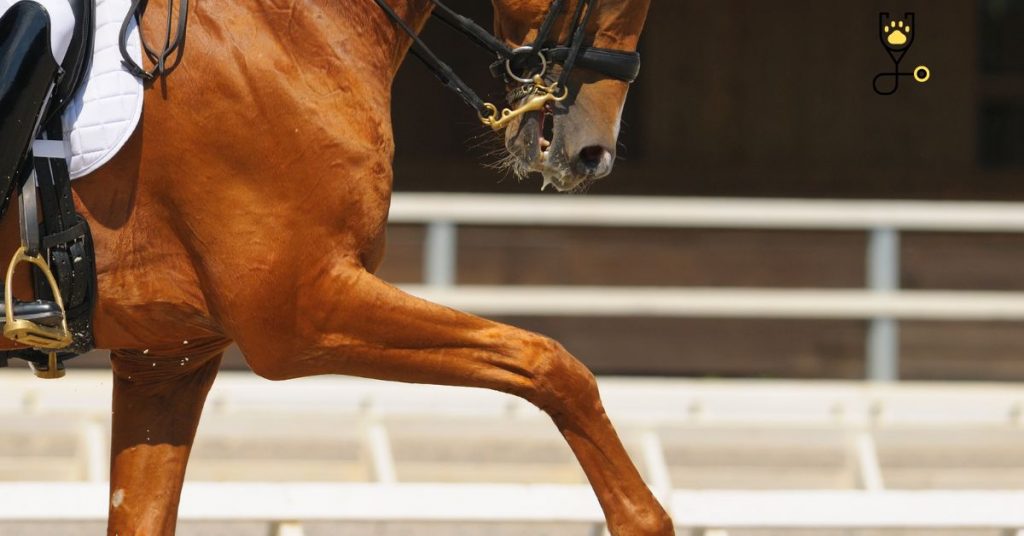
Symptoms of Curbs in Horses
The most common symptom of a curb is lameness, usually on just one leg. Other symptoms include:
* Swelling and inflammation in the affected area
* Pain when the hock is flexed
* Stiffness in the hock
Causes of Curbs in Horses
There are several things that can cause a horse to develop a curb, including:
* Overstretching the leg: This could happen if the horse stumbles or trips.
* Unbalanced shoes: If a horse’s shoes are unbalanced, it may put too much pressure on one side of the hoof, which can lead to a curb.
* Poor conformation: Some horses are simply born with poor conformation, which can make them more prone to developing a curb.
Treatment Of Curbs in Horses
If your horse has a mild curb, it may not need any treatment other than rest and time. More serious cases may require:
* Stabling the horse: This will help to prevent the injury from getting worse.
* Wrapping the affected leg: This will help to reduce swelling and pain.
* Giving the horse non-steroidal anti-inflammatory drugs (NSAIDs): These can help to reduce inflammation and pain.
* Surgery: In some cases, surgery may be necessary to remove damaged tissue.
3. Suspensory Ligament Injuries
The suspensory ligament is a long, strong ligament that runs down the back of the horse’s leg from the stifle (knee) to the fetlock (ankle). It’s an important structure that helps to support the horse’s weight and keep it balanced. However, this ligament is also susceptible to injury, particularly in racehorses and show jumpers.
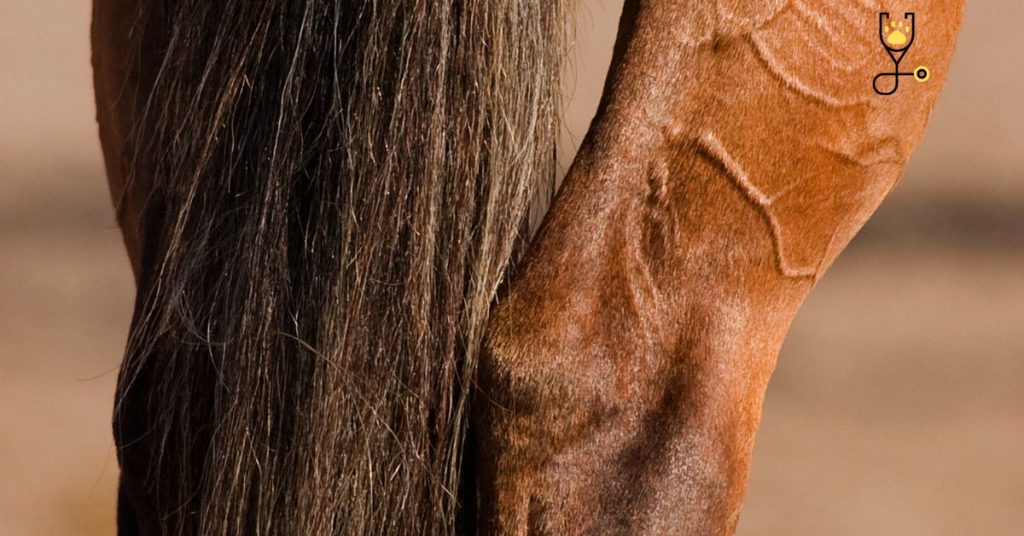
Symptoms of Suspensory Ligament Injuries in Horses
The most common symptom of a suspensory ligament injury is lameness, which may be mild at first but can become more severe over time. Other symptoms include:
* Swelling in the affected area
* Pain when the horse is moved or when weight is placed on the leg
* Stiffness in the affected leg
Causes of Suspensory Ligament Injuries in Horses
There are several things that can cause a horse to develop a suspensory ligament injury, including:
* Trauma: A suspensory ligament injury is often caused by trauma, such as a fall or being kicked by another horse.
* Overuse: If a horse is worked too hard or too often, it may develop an overuse injury to the suspensory ligament.
* Disease: Some diseases, such as arthritis, can cause inflammation and weakness in the suspensory ligament, which can make it more prone to injury.
Treatment of Suspensory Ligament Injuries in Horses
Treatment for a suspensory ligament injury will vary depending on the severity of the injury. For minor injuries, rest and cold therapy may be all that is needed. More severe injuries may require surgery to repair the damaged ligament.
4. Capped Hocks
Capped hocks are a type of injury that affects the back of the hock (the large joint at the back of the hind leg). They’re caused by a blow to the hock, which can happen if a horse stumbles or is kicked by another horse. Capped hocks are relatively common injuries, particularly in racehorses and show jumpers.
Symptoms of Capped Hocks in Horses
The most common symptom of capped hocks is lameness, which may be mild at first but can become more severe over time. Other symptoms include:
*swelling and inflammation in the affected area
*pain when the horse is moved or exercised
*sensitivity to touch or pressure in the affected area
*stiffness and lameness that gets worse with exercise
Capped hocks can be difficult to diagnose because the symptoms are similar to those of other conditions, such as arthritis or tendonitis. Your veterinarian will likely perform a physical examination and take X-rays to rule out other possibilities.
Causes Of Capped Hocks
Capped hocks are caused by a buildup of fluid and inflammation in the bursa, which is a small, sac-like structure that helps to cushion and protect the joints. The exact cause of this condition is not known, but it is thought to be related to repetitive trauma or injury to the area.
Treatment For Capped Hocks
There is no specific cure for capped hocks, but the condition can be managed with medication and rest. Your veterinarian may prescribe anti-inflammatory drugs to help reduce swelling and pain. They may also recommend that you apply cold therapy or wraps to the affected area.
5. Arthritis
Arthritis is a common condition that can affect horses of all ages. It’s a degenerative disease that causes inflammation and pain in the joints. There are many different types of arthritis, but the most common form in horses is osteoarthritis.
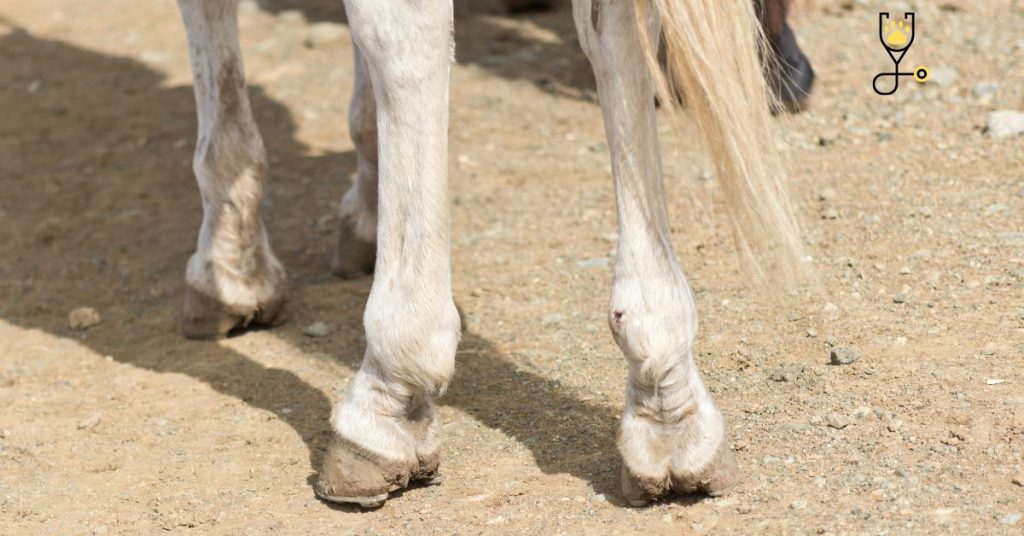
Symptoms Of Arthritis In Horses
The most common symptom of arthritis is lameness, which may be mild at first but can become more severe over time. Other symptoms include:
*stiffness and soreness in the joints
*swelling and inflammation in the affected area
*joint pain that is worse with exercise
*reluctance to move or exercise
Causes Of Arthritis In Horses
There are many different things that can cause a horse to develop arthritis, including:
– trauma or injury to the joints
– overuse of the joints
– infection in the joints
– autoimmune disease
Treatment For Arthritis In Horses
There is no cure for arthritis, but the condition can be managed with medication and rest. Your veterinarian may prescribe anti-inflammatory drugs to help reduce swelling and pain. They may also recommend that you apply cold therapy or wraps to the affected area. Surgery is an option in some cases, but it is usually only considered if other treatments have failed.
6. Tendonitis
Tendonitis is a condition that causes inflammation and pain in the tendons, which are tough, rope-like structures that attach muscles to bones. The most common form of tendonitis in horses is known as “bowed tendon,” which affects the tendons in the front of the legs.
Symptoms Of Tendonitis In Horses
The most common symptom of tendonitis is lameness, which may be mild at first but can become more severe over time. Other symptoms include:
– swelling and inflammation in the affected area
– pain when the horse is moved or exercised
– stiffness and lameness that gets worse with exercise
Causes Of Tendonitis In Horses
Tendonitis is usually caused by repetitive trauma or injury to the tendons. It can also be caused by infection, autoimmune disease, or arthritis.
Treatment For Tendonitis In Horses
There is no specific cure for tendonitis, but the condition can be managed with medication and rest. Your veterinarian may prescribe anti-inflammatory drugs to help reduce swelling and pain. They may also recommend that you apply cold therapy or wraps to the affected area. Surgery is an option in some cases, but it is usually only considered if other treatments have failed.
7. Bog Spavins
Bog spavins are a type of growth that can develop on the hock (rear leg) of a horse. They are made up of extra bone and tissue, and they can range in size from a small bump to a large mass. Bog spavins are not cancerous, but they can cause pain and lameness if they press on nerves or blood vessels.
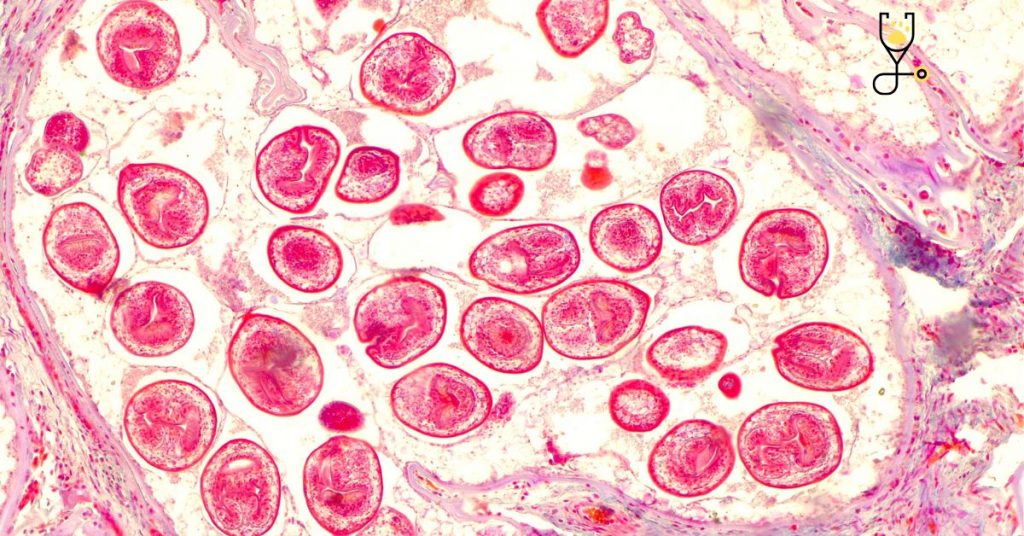
Symptoms Of Bog Spavins
The most common symptom of bog spavins is lameness, which may be mild at first but can become more severe over time. Other symptoms include:
– swelling and inflammation in the affected area
– pain when the horse is moved or exercised
– stiffness and lameness that gets worse with exercise
Causes Of Bog Spavins
The exact cause of bog spavins is unknown, but they are thought to be caused by a combination of genetics and environment.
Treatment For Bog Spavins
There is no specific cure for bog spavins, but the condition can be managed with medication and rest. Your veterinarian may prescribe anti-inflammatory drugs to help reduce swelling and pain. They may also recommend that you apply cold therapy or wraps to the affected area. Surgery is an option in some cases, but it is usually only considered if other treatments have failed.
8. Windgalls
Windgalls are fluid-filled swellings that often form on the front of a horse’s lower legs, just above the fetlock joint. They’re most common in racehorses and other athletic horses, and they can range in size from a small bump to a large mass. Windgalls are not cancerous, but they can cause pain and lameness if they press on nerves or blood vessels.
Symptoms Of Windgalls
The most common symptom of windgalls is lameness, which may be mild at first but can become more severe over time. Other symptoms include:
-Swelling on the front of the leg just below the knee
-Sensitivity to touch or pressure in the affected area
-Heat and inflammation in the affected area
-Stiffness in the affected leg
-Loss of mobility in the affected leg
Causes Of Windgalls
Windgalls are thought to be caused by a combination of genetics and environment. They’re more common in racehorses and other athletic horses because of the repetitive trauma that these animals experience.
Treatment For Windgalls
There is no specific cure for windgalls, but the condition can be managed with medication and rest. Your veterinarian may prescribe anti-inflammatory drugs to help reduce swelling and pain. They may also recommend that you apply cold therapy or wraps to the affected area. Surgery is an option in some cases, but it is usually only considered if other treatments have failed.
Conclusion
So there you have it, eight common conditions that can affect your horse’s health. While some of these conditions are more serious than others, all of them can be managed with proper treatment. If you think your horse may be suffering from any of these conditions, be sure to contact your veterinarian right away.
Frequently Asked Questions
Q1: What Is The Difference Between A Spavin And A Bog Spavin?
A: A spavin is a growth that forms on the inside of the horse’s hock (rear leg), while bogging spavin forms on the outside of the hock. Both types of growths are made up of extra bone and tissue, and they can range in size from a small bump to a large mass.
Q2: Are Windgalls Cancerous?
A: No, windgalls are not cancerous. They’re fluid-filled swellings that often form on the front of a horse’s lower legs, just above the fetlock joint. They’re most common in racehorses and other athletic horses, and they can range in size from a small bump to a large mass.
Q3:How T, Do I Know If My Horse Has A Spavin?
A: The most common symptom of a spavin is lameness, which may be mild at first but can become more severe over time. Other symptoms include:
– swelling and inflammation in the affected area
– pain when the horse is moved or exercised
– stiffness and lameness that gets worse with exercise. If you think your horse may have a spavin, contact your veterinarian for an exam.
Q4:Can Windgalls Be Treated?
A: Yes, windgalls can be treated with medication and rest. Your veterinarian may prescribe anti-inflammatory drugs to help reduce swelling and pain. They may also recommend that you apply cold therapy or wraps to the affected area. Surgery is an option in some cases, but it is usually only considered if other treatments have failed.
Q5:Why Do Windgalls Form?
A: Windgalls are thought to be caused by a combination of genetics and environment. They’re more common in racehorses and other athletic horses because of the repetitive trauma that these animals experience.
